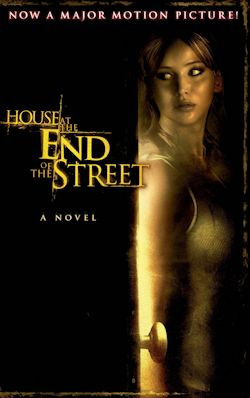Lily Blake’s novelization of “The House At The End Of The Street,” adapted from a screenplay by David Loucka and a story by Jonathan Mostow, steps into the realm of young adult horror thrillers, promising suspense and intrigue over outright gore. Having explored numerous books that have transitioned into films, and fewer film novelizations, this review delves into whether “The House at the End of the Street” successfully translates the cinematic suspense to the page.
Clocking in at a concise 190 pages, this book is a swift read, almost a literary snack, perfectly suited for an afternoon of suspense. The pacing is brisk, maintaining a level of suspense that keeps you subtly hooked, primarily driven by the central twist. While the core premise is engaging enough to hold attention, it treads familiar ground within the horror genre. To be frank, originality is a rare commodity in horror, and “The House at the End of the Street,” while not entirely reinventing the wheel, offers a twist that, although not entirely unique, remains effective and avoids predictability for many readers. To delve further into this twist would unfortunately venture into spoiler territory, best left for readers to discover themselves.
However, while the narrative maintains a level of engagement, the writing style itself doesn’t quite reach gripping heights. It’s competent but lacks a certain descriptive depth that could have truly brought the characters and their emotional landscapes to life. There’s a noticeable sense that the book is derived from a visual medium; it reads almost like a detailed recounting of a movie rather than a purely literary creation. This isn’t necessarily a flaw, but it does impact the immersive experience. One can easily imagine the story translating effectively to film, perhaps even more so than standing alone as a purely literary work.
 the house at the end of the street
the house at the end of the street
Despite these points, “The House at the End of the Street” succeeds in being an entertaining read within its genre. It’s not high literature, but for what it aims to be – a suspenseful young adult thriller – it largely delivers. From the outset, the narrative grabs your attention, compelling you to see how the story unfolds. While it may not induce nail-biting tension, it maintains a steady level of engagement that’s satisfying for readers seeking a light horror experience.
The story centers on Sarah and her daughter Elissa, whose relationship has become strained following Elissa’s father’s departure. Seeking a fresh start and hoping to guide Elissa away from perceived pitfalls, Sarah relocates them from the city to a quieter small town. They settle into a rental house made affordable due to a grim history: the previous owners, a couple, were murdered in the house next door by their teenage daughter.
Adding to the unsettling atmosphere, the son of the murdered couple still resides in the infamous house next door, much to the discomfort of the townsfolk. Elissa’s path crosses with his one rainy evening when he offers her a ride home. Against Sarah’s instincts, a friendship blossoms between Elissa and the ostracized neighbor, drawing him back into the community’s judgmental gaze – a place he has actively avoided.
“The House at the End of the Street” provides a light and suspenseful narrative that serves as an enjoyable, quick read. It evokes the spirit of low-budget horror movies, reminiscent of classics like Scream or A Nightmare on Elm Street, but with less graphic violence, leaning more into psychological suspense. For readers who enjoy these types of suspenseful thrillers and are looking for a fast-paced, engaging story with a twist, “The House at the End of the Street” is worth considering. Just keep your expectations aligned with a light, suspenseful thriller, and you’ll likely find it a quite entertaining read.
